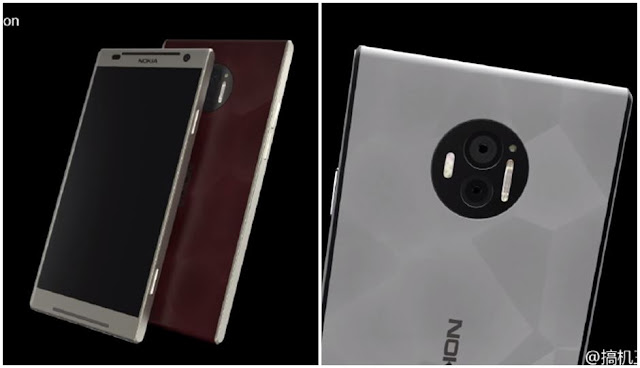Is Nokia working on its own AI assistant for smartphones?
Nokia is planning its return to the smartphone industry with two new flagship smartphones. The Finnish smartphone maker is expected to showcase its first products at Mobile World Congress in February and now a new leak suggests that one of those devices could be the Nokia C1.
Nokia C1 renders have now appeared on Weibo and offers a rather unusual design. The renders show Nokia C1 to feature metal unibody design with the screen dominating the front. The smartphone also seems to drop the physical home button with front camera and another sensor tucked in between a large speaker grille. There is a similar speaker layout at the bottom edge of the screen as well.
The smartphone also seems to have buttons placed at the right hand side of the device. It is unclear whether these buttons are physical or capacitive ones. Interestingly, the render hints at the device adopting dual rear camera mechanism with LED flash placed at either side of the camera. The smartphone sports a combination of 16 + 12MP rear camera setup with Xenon flash and triple LED flash aiding for low light photography. However, the front camera is a modest 5MP one.
The leaked images also reveal that the smartphone will be powered by Qualcomm Snapdragon 830 processor aided by 4GB DDR4 RAM and option of 32/64/128GB storage. The smartphone houses a 3210mAh battery and runs Android 7.1 Nougat.
Nokia C1 uses USB-C port for data and charging while there also seems to be a 3.5mm audio jack. The smartphone is expected to launch in the first quarter of 2017. If these renders turn out to be true, then we are definitely looking at one sleek and hot-selling Android smartphone in 2017.

















